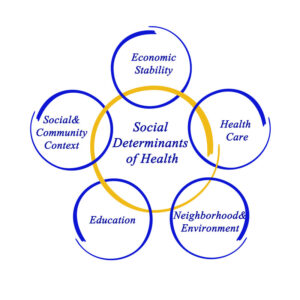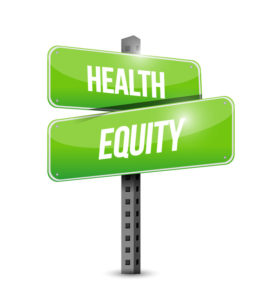“We need to advance health equity in a sustainable way – not with charity care and not performative health equity”, said Dr. Alister Martin, ED physician and CEO of A Healthier Democracy in the closing keynote at the annual NEHIMSS chapter conference last week. One of the many initiatives of A Healthier Democracy is Link Health which focuses on connecting patients to the Affordable Connectivity Program (ACP) to close the digital divide.
keynote at the annual NEHIMSS chapter conference last week. One of the many initiatives of A Healthier Democracy is Link Health which focuses on connecting patients to the Affordable Connectivity Program (ACP) to close the digital divide.
Listening to Dr. Martin last Thursday, I decided to use this week’s blog post to amplify this important initiative and help raise awareness among health IT leaders about the ACP and its importance for healthcare. As they say, timing is everything. June 14-22 is the ACP White House Week of Action and June 16 is the ACP Healthcare Day of Action.
Here’s some background on the ACP taken from the Link Health website:
COVID-19 Accelerated A Massive Shift To Telehealth.
The COVID-19 pandemic ushered in widespread acceptance of telehealth and other digital innovations in medicine and dramatically increased the use of telehealth as an intervention to reach patients. A recent HHS study shows a 63-fold increase in Medicare telehealth utilization and 32-fold increase in behavioral health care through telehealth triggered by the pandemic.
Access To Broadband Internet Is A Social Determinant Of Health.
Despite widespread internet usage in the United States, 15–24% of Americans lack broadband internet connection, a foundational requirement for telehealth and the bevy of other services that underpin the social determinants of health. In fact, access to broadband internet has been considered a “super” social determinant of health (SDoH).
The Affordable Connectivity Program Expands Broadband Access But Needs Help From Healthcare.
The Bipartisan Infrastructure Law created the Affordable Connectivity Program which provides a subsidy of up to $30/month for lower-income households ($75/month for households on tribal lands) on participating internet service plans and a one-time $100 subsidy for a connected device. 51.6 million households are eligible for the ACP, yet only 25% have enrolled. 38 million more households are potentially missing out on money to pay their internet bill. Importantly, only 13% of patients with Medicaid have signed up for the ACP.
Link Health is partnering with the White House, Civic Nation, and leading healthcare organizations on the ACP Week of Action to leverage the health sector to connect patients to the ACP and close the digital divide. There are resources at this site if you are ready to be part of the action and amplify the message through your organization and in your community. Continue reading

